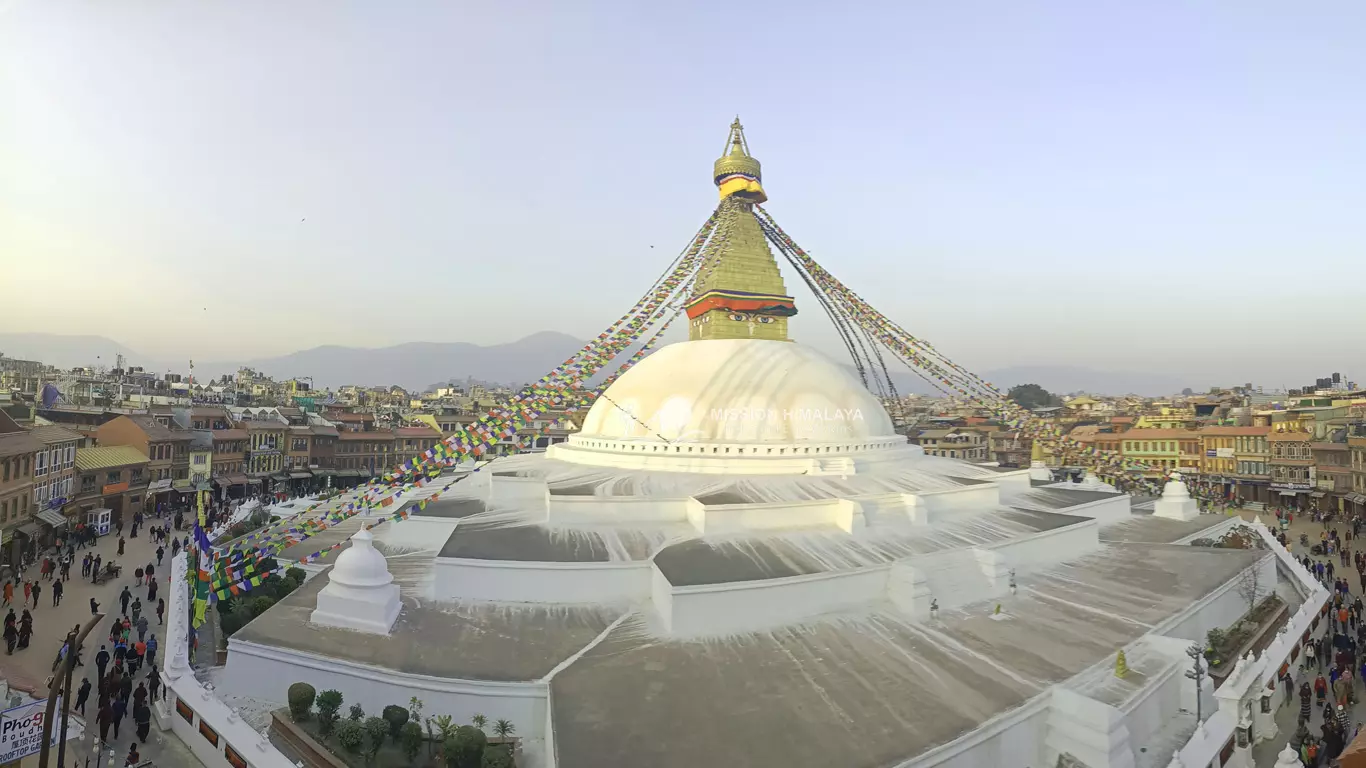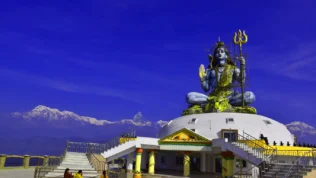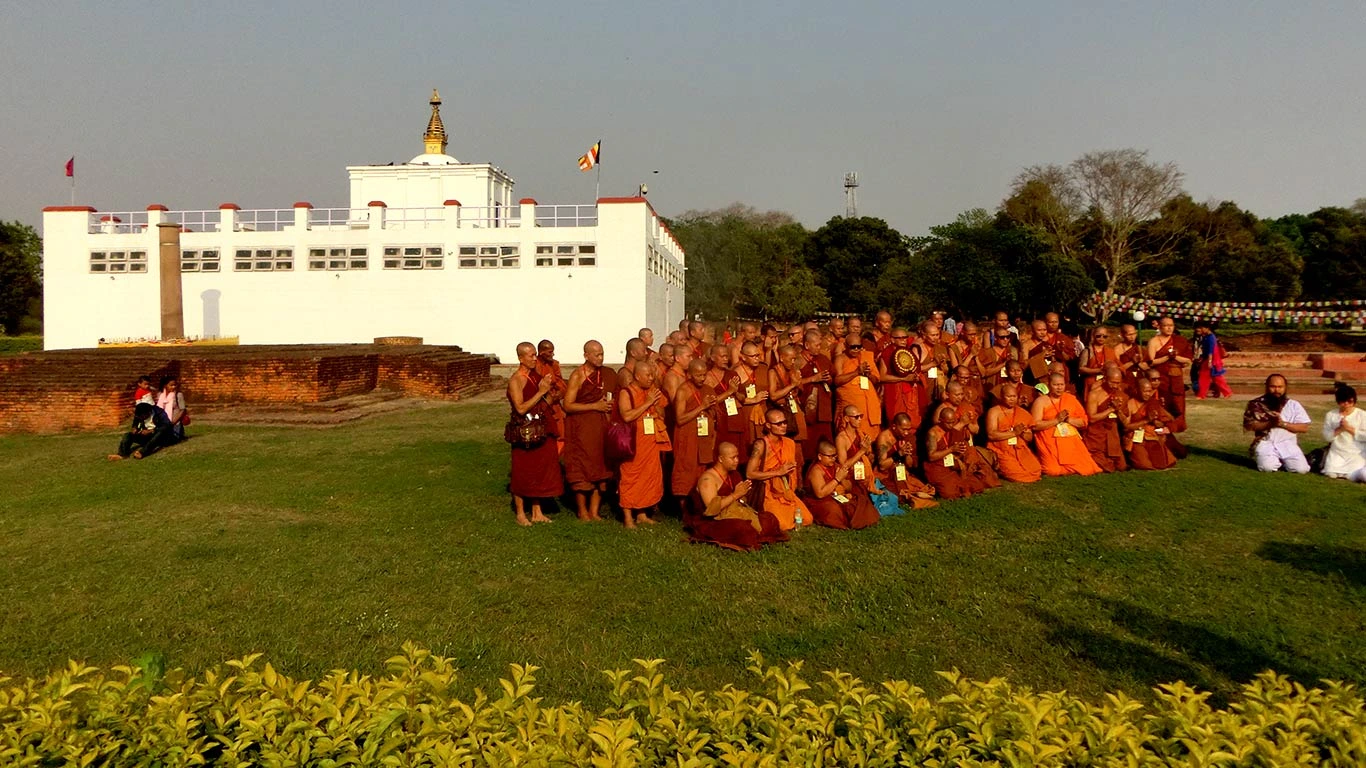Nepal Cultural Tours is crafted especially to soothe the wanderlust of each cultural aficionado’. Nepal isn’t just for trekkers and mountaineers, it’s also a destination for culture lovers.
Similar to the way Nepal is famed for the mountains, this land-barred country is equally eminent for the harmonious living of different ethnic groups under the same roof.
Our professionally curated Nepal Cultural Tour packages promise to boost your mood with spiritual happiness and satisfaction. Depending upon your time availability you can opt for a day-to-week-long cultural tour experience in Nepal.
The establishment of the International Airport near Lumbini has made it possible to have the best one-day Lumbini cultural tour.
For a half or full-day cultural tour, the monuments of Pashupatinath temple, Kathmandu Durbar Square, Boudhanath Stupa, Swayambhunath, and various other sites in Kathmandu tender the best cultural delights.
Be it Hindu or Buddhist culture, Kathmandu Valley astonishes every cultural enthusiast. In addition, the feast of the Newari tribe which is held every single day in a different corner of the valley is not to be missed.
Escaping outside of the Kathmandu valley for cultural exploration, an array of places are waiting to cater to travelers for an extended time period. Whether you go to the cities of Pokhara or Kathmandu or venture to the trekking regions of Nepal, cultural delights in Nepal always accompany you.
Well preserved from the ancient day each of the settlements of the Nepalese society has garnered itself with its unique tradition, custom, and religion. The culture that you experience in one region of the country might vary while probing into another part of the country.
In addition, the long and great history formed by the ancient saints and kings of this territory has collected a pile of monumental and religious gems for the exploration of each passing generation. Either for peace of mind or for study purposes Cultural Tour in Nepal is worth it in every aspect.
Furthermore, Roaming around the heritages or religious sites of Nepal, the elegantly dressed pilgrims showcase their religious beauty with their traditional attire.
If you manage to make your way to the nomadic settlements of Nepal, their astonishing lifestyle engraves a different picture of Nepalese culture in your mind.
Though each Nepalese ethnic group is scattered over the country the Himalayan region is mainly occupied by the legendary Sherpas following Tibetan Buddhism, the mid-hills and lower hills are dominated by Limbu, Tamang, Brahmin, Chhetri, Magar Gurung, and many others. Likewise, the Terai belt is ruled mostly by the Tharu and Madhesi cultures and practices.
Is Nepal a fully diverse country with different cultures?
Yes, Nepal is indeed a highly diverse country with a rich tapestry of cultures, languages, and ethnicities. Despite its relatively small size, Nepal boasts an astonishing variety of ethnic groups, each with its own unique traditions, customs, and languages. The country is home to more than 125 distinct ethnic groups, including the dominant Indo-Aryan and Tibeto-Burman peoples, as well as numerous indigenous and minority communities.
This diversity is evident in every aspect of Nepali life, from the vibrant festivals celebrated throughout the year to the diverse cuisine that reflects regional tastes and traditions. Each ethnic group contributes to Nepal’s cultural mosaic, enriching the country’s social fabric and heritage.
Furthermore, Nepal’s geographical diversity, ranging from the lowland Terai plains to the towering peaks of the Himalayas, further enhances its cultural richness. This diversity of landscapes has shaped distinct ways of life and cultural practices among different communities, making Nepal a truly fascinating and multifaceted country to explore.
Does this thing make the Nepal Culture tour more exciting?
The diverse cultural landscape of Nepal adds excitement and depth to any cultural tour of the country. Here’s how:
Variety of Experiences: Nepal’s cultural diversity means that each region offers unique experiences, from the bustling markets of Kathmandu to the serene monasteries of the Himalayas and the traditional villages of the Terai. This variety keeps the tour dynamic and engaging, with something new to discover at every stop.
Rich Heritage: Nepal’s cultural heritage is incredibly rich, with a history that spans thousands of years. Exploring ancient temples, palaces, and monuments allows travelers to immerse themselves in the country’s fascinating past and gain insight into its traditions and beliefs.
Interaction with Locals: Meeting people from different ethnic groups and communities provides an opportunity to learn about their way of life, traditions, and customs firsthand. Whether it’s sharing a meal with a local family, participating in a traditional dance, or learning a new craft, these interactions add depth and authenticity to the cultural tour.
Colorful Festivals: Nepal is known for its vibrant festivals, which are celebrated with great fervor and enthusiasm throughout the year. Witnessing festivals such as Dashain, Tihar, and Holi allows travelers to experience the country’s festive spirit and cultural pride in full swing.
Scenic Beauty: Alongside its cultural treasures, Nepal is blessed with breathtaking natural beauty. From the snow-capped peaks of the Himalayas to the lush valleys and tranquil lakes, the stunning landscapes provide a picturesque backdrop to the cultural tour, enhancing the overall experience.
Adventure Opportunities: For those seeking adventure, Nepal offers plenty of opportunities to complement the cultural tour with activities such as trekking, rafting, and wildlife safaris. These experiences allow travelers to explore the country’s diverse landscapes up close and add an extra layer of excitement to the journey.
In summary, the diverse cultural landscape of Nepal makes cultural tours more exciting by offering a variety of experiences, rich heritage, interactions with locals, colorful festivals, scenic beauty, and adventure opportunities. Whether you’re a history buff, a foodie, a nature lover, or an adventure enthusiast, Nepal has something to offer to make your cultural tour an unforgettable experience.
What are the cultural facts of Nepal?
Religion and Spirituality
- Hinduism and Buddhism: The majority of Nepalese people practice Hinduism, followed by Buddhism. Both religions coexist peacefully, with many shared festivals and places of worship.
- Pashupatinath Temple: One of the most sacred Hindu temples, located in Kathmandu, is dedicated to Lord Shiva.
- Lumbini: The birthplace of Siddhartha Gautama, the Buddha, is one of the most important pilgrimage sites for Buddhists worldwide.
Festivals
- Dashain: The biggest and most important Hindu festival in Nepal, celebrating the victory of good over evil.
- Tihar: Also known as the Festival of Lights, it honors various animals, including crows, dogs, and cows, and involves decorating homes with lights and colorful designs.
- Holi: The festival of colors, celebrated with much enthusiasm and joy.
- Losar: The Tibetan New Year, celebrated by the Tibetan and Sherpa communities with prayers, feasts, and traditional dances.
Language and Literature
- Nepali: The official language, spoken by the majority of the population.
- Maithili, Bhojpuri, Tharu: Other widely spoken languages, reflecting the ethnic diversity of the country.
- Literature: Nepal has a rich tradition of literature, with notable works in Nepali, Newari, and other languages.
Music and Dance
- Traditional Music: Influenced by religious and folk traditions, using instruments like the madal (drum), sarangi (string instrument), and bansuri (flute).
- Dances: Various traditional dances are performed during festivals and celebrations, including the Lakhey dance, which is performed to ward off evil spirits.
Art and Architecture
- Pagodas and Stupas: Nepal is known for its unique architectural styles, including the pagoda-style temples and stupas like Swayambhunath and Boudhanath.
- Thangka Paintings: Traditional Buddhist paintings on cotton or silk, depicting deities, mandalas, and scenes from the life of Buddha.
Clothing
- Daura Suruwal: The traditional male attire, consisting of a long shirt (daura) and pants (suruwal).
- Gunyu Cholo: The traditional dress for women, often complemented with a shawl and jewelry.
- Dhaka Fabric: A handwoven fabric often used to make traditional hats (topi) and scarves.
Food and Cuisine
- Dal Bhat: The staple food, consisting of rice (Bhat) and lentil soup (dal), often served with vegetable curries, pickles, and yogurt.
- Momos: Popular dumplings filled with meat or vegetables, influenced by Tibetan cuisine.
- Gundruk: A fermented leafy green vegetable, commonly eaten with meals.
Social Structure and Customs
- Ethnic Diversity: Nepal is home to over 100 ethnic groups, each with its own unique customs, traditions, and languages.
- Family Structure: Traditionally, families in Nepal are extended, with several generations living together.
- Greetings: The traditional greeting is “Namaste,” accompanied by a slight bow with palms pressed together.
Handicrafts
- Carpet Weaving: Nepal is known for its hand-knotted woolen carpets, which are highly valued for their quality.
- Metalwork: Traditional metal crafts include statues, bells, and ritual objects, often made of bronze and copper.
- Woodcarving: Exquisite woodwork can be seen in temples, windows, and doors, especially in the Kathmandu Valley.
Sports and Recreation
- Mountaineering: Nepal is famous for its trekking and mountaineering opportunities, including expeditions to Mount Everest.
- Cricket and Football: Popular sports among the younger population.
- Traditional Games: Games like dandi biyo (a game similar to cricket) and kabaddi are also enjoyed.
How many cultures are there in Nepal?
Nepal is incredibly diverse in terms of culture, with over 125 distinct ethnic groups and more than 123 languages spoken. Each ethnic group has its own unique customs, traditions, and cultural practices. Here are some of the major cultures in Nepal:
Khas-Arya Culture:
- Includes the Brahmin and Chhetri communities.
- Rich in Hindu rituals, festivals like Dashain and Tihar, and traditional music and dance.
Newar Culture:
- Indigenous to the Kathmandu Valley.
- Known for vibrant festivals such as Indra Jatra and Kumari Jatra, intricate art, architecture, and Newari cuisine.
Magar Culture:
- Found primarily in the western and central hilly regions.
- Known for unique languages, folk music, dances like Sorathi, and festivals like Bhume Puja.
Tharu Culture:
- Indigenous to the Terai region.
- Known for colorful traditional attire, dances like Jhumra, and festivals such as Maghi.
Tamang Culture:
- Predominantly in the central hilly regions.
- Rich in Tibetan Buddhist traditions, music, and dances like Tamang Selo, and Losar festival celebrations.
Sherpa Culture:
- Found in the eastern Himalayas.
- Known for mountaineering expertise, Tibetan Buddhist practices, and festivals like Mani Rimdu.
Gurung Culture:
- Primarily in the mid-hills of central Nepal.
- Known for unique traditions, dances like Rodhi, and festivals such as Tamu Lhosar.
Limbu Culture:
- Indigenous to eastern Nepal.
- Known for their Kiranti traditions, dances like Dhan Naach, and festivals such as Chasok Tangnam.
Rai Culture:
- Found in eastern Nepal.
- Rich in Kiranti rituals, dances like Sakela, and festivals like Sakela Ubhauli and Sakela Udhauli.
Maithil Culture:
- Predominantly in the eastern Terai region.
- Known for Maithili art, music, literature, and festivals like Chhath and Sama Chakeva.
Thakali Culture:
- Indigenous to the Thak Khola region of Mustang.
- Known for their cuisine, unique rituals, and festivals such as Lha Phewa.
These cultures contribute to the vibrant and diverse cultural landscape of Nepal, each with its own distinct identity and heritage.
Specialty of Cultural Tours in Nepal
Historical Reenactments and Storytelling Evenings: Experience Nepal’s rich history first-hand through captivating historical reenactments and storytelling sessions. These events often take place in ancient palaces or traditional courtyards, where actors and storytellers bring to life the tales of legendary Nepalese kings, battles, and folklore.
This immersive experience provides a vivid insight into Nepal’s past, making history engaging and accessible. Attendees can witness traditional costumes, music, and dance that have been integral to Nepalese culture for centuries.
Art and Craft Workshops: Nepal’s rich traditions in arts and crafts offer another avenue for cultural immersion. Participate in workshops where you can learn skills like Thangka painting, pottery, or the weaving of Dhaka textiles.
These workshops are often held in artisan villages and are led by master craftsmen whose families have practiced these arts for generations. Visitors not only come away with a deeper appreciation of Nepalese art but also with unique handmade souvenirs.
Festival Tours: Experiencing Nepal during festival time is particularly enchanting. The country’s calendar is dotted with colorful and significant festivals like Dashain, Tihar, and Holi, each offering unique activities and celebrations.
Special festival tours can include private viewings of ceremonies, participation in festival activities, and explanations of the festivals’ histories and meanings from knowledgeable local guides. These experiences allow travelers to see the vibrant cultural fabric of Nepal in its full glory.
Village Homestays and Cultural Exchange: For an authentic slice of Nepali life, nothing beats staying in a village homestay. This experience allows visitors to live with a Nepali family, share meals, and participate in daily chores and activities.
It’s an excellent opportunity for cultural exchange and to learn about rural life in Nepal, which differs significantly from urban centers. These homestays often support sustainable tourism practices and provide a direct economic benefit to host communities.
Archaeological Tours: Delve deeper into Nepal’s ancient civilizations with archaeological tours that explore historic sites beyond the well-trodden paths.
Visit ancient ruins, excavated cities, and archaeological museums guided by experts in Nepalese history and archaeology. These tours offer fascinating insights into the lives of ancient Nepalese societies, their cultural practices, and how they have influenced contemporary Nepalese culture.
Traditional Music and Dance Workshops: Engage with Nepal’s musical traditions through workshops that teach the art of Nepalese music and dance.
Learn to play traditional instruments like the madal and sarangi, or take part in dance classes that teach the steps of classical dances like the Lakhey dance or the Sherpa dance. These workshops not only provide fun and entertainment but also deepen your appreciation for the country’s rich cultural expressions.
Mindfulness and Spiritual Healing Retreats: For a spiritually enriching experience, consider joining a retreat focused on mindfulness and spiritual healing.
These retreats often take place in tranquil locations surrounded by nature and can include activities like guided meditation, yoga, Buddhist teachings, and sessions with local healers. Such experiences are designed to provide peace of mind, body relaxation, and spiritual growth, reflecting the deep-rooted spirituality of Nepal.
Custom Cultural Itineraries: Finally, for those with specific interests or limited time, custom cultural itineraries can be crafted to focus on particular aspects of Nepalese culture that most intrigue you.
Whether it’s exploring the artisan crafts of the Kathmandu Valley, undertaking a pilgrimage route, or focusing solely on the culinary delights of the region, personalized tours ensure a deeply personal and fulfilling visit to Nepal.
You just give a hint of what you want to explore and for how many days, we take no time to customize Nepal Cultural Tours as per your interest.
With our experienced cultural guides, be ready for wonderful communication with the locals of Nepal’s ethnic settlements. And get in the mood to indulge in their feast and celebrations.











